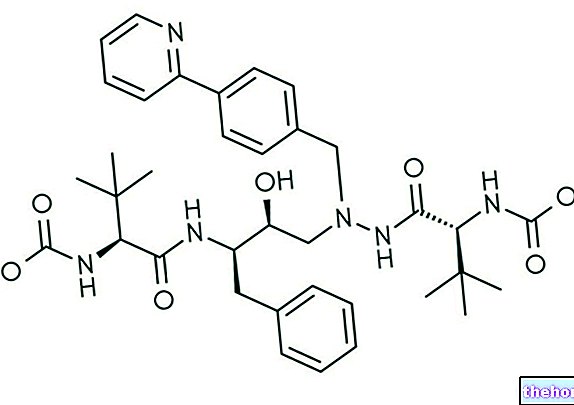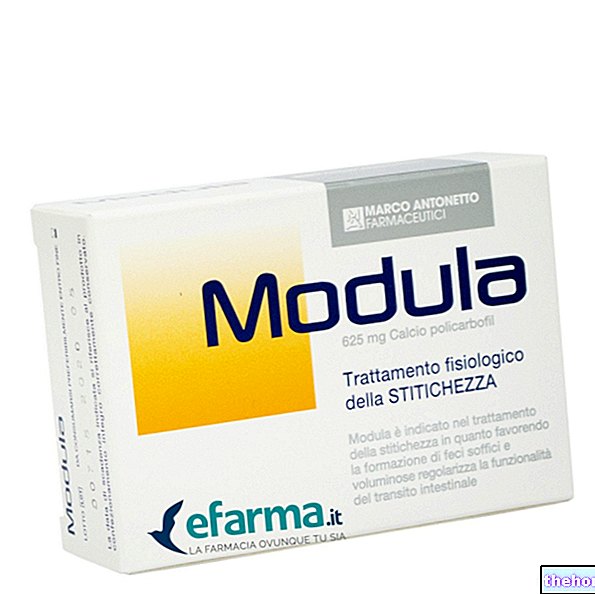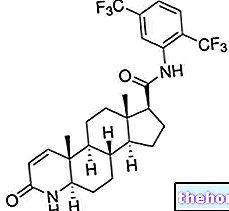Definition
COPD - acronym for chronic obstructive pulmonary disease - represents the most common complication of bronchitis: we are talking about a chronic disease affecting the bronchi and lungs, mainly responsible for breathing difficulties and alteration of lung (especially) and bronchial elasticity.
Notes: COPD is defined as "chronic" to underline the difficulty (and often the "impossibility) of a complete recovery of the sick patient, despite treatment.
Causes
As we have seen, COPD is a complication of bronchitis, but it often represents a possible inflammatory response (led to excess) to smoke, gas and environmental pollution. Among the risk factors, genetic predisposition plays a leading, associated role. at an advanced age and, of course, smoking.
Symptoms
Breathing difficulty is the key symptom of COPD, essentially associated with emphysema and chronic bronchitis. Other closely related symptoms include: anorexia, asthenia, increased carbon dioxide in the blood, decreased weight, overproduction of mucus and catarrhal cough. Based on the severity of symptoms, COPD is classified into mild, moderate, and severe forms.
Information on COPD - Medicines to Treat COPD is not intended to replace the direct relationship between health professional and patient. Always consult your doctor and / or specialist before taking COPD - Medicines to Treat COPD.
Medicines
When left untreated or neglected, COPD proves fatal; in fact, the disease has proved to be one of the main causes of death worldwide.
Being a chronic and subtle disease, COPD patients - despite a targeted and precise drug treatment - cannot recover completely. In any case, the use of drugs is necessary and essential to avoid the complications of the disease: in fact, in the long run, COPD - degenerating into serious breathing difficulties and chronic cough with the presence of sputum - could seriously hinder the simple daily activities of the patient. patient, such as shopping, eating and sleeping.
Furthermore, since COPD is a disease closely related to smoking, smoking cessation is a fundamental practice to better address the disease. Clearly, smoking cessation or abstention is one of the most important rules for preventing lung / bronchial diseases such as pneumonia, bronchitis and, of course, COPD.
Among the drugs most used in therapy against COPD, bronchodilators, antibiotics (in case of bacterial superinfections), cortisones, derivatives from theophylline and anticholinergics cannot be missing.
The flu vaccine has proved to be particularly suitable in order to avoid any possible complications of chronic obstructive pulmonary disease.
The following are the classes of drugs most used in COPD therapy and some examples of pharmacological specialties; it is up to the doctor to choose the most suitable active ingredient and dosage for the patient, based on the severity of the disease, the state of health of the patient and his response to treatment:
Antibiotics: the administration of antibiotics is indicated only for the treatment of bacterial infections in the context of COPD. Among the most commonly used antibiotics are: Amoxicillin (eg Augmentin, Klavux), Telithromycin (eg Ketek) and erythromycin (eg Erythro L, Lauromycin). The dosage and duration of treatment must be determined by the doctor. Finally, it should be noted that antibiotics are almost indispensable in the event of a worsening of cough associated with sputum.
Bronchodilators: they carry out their therapeutic activity by relaxing the muscles of the respiratory tract; are recommended to calm coughs and counteract breathing difficulties:
- Formoterol (eg. Oxis Turbohaler, Sinestic Mite, Symbicort Mite, Kurovent) is also available combined with mometasone, in the form of inhaled capsules (1 inhalation of 12 mcg every 12 hours) or as a solution to be inhaled (from 20 mcg to 2 ml. per vial, to be inhaled through a special nebuliser, with mask)
- Indacaterol (Onbrez): belongs to the category of selective beta 2 agonists, like the aforementioned formoterol. These drugs can be further classified according to the duration of action; thus we have beta 2 agonists of short duration (fenoterol, salbutamol, terbutaline sulfate, orciprenaline) and long duration (salmeterol, bambuterol, formoterol fumarate).
Indacaterol is the progenitor of the beta 2 agonists with an ultra-long duration of action, so called because they guarantee a bronchodilation that lasts for at least 24 hours from intake, allowing a single daily intake. The dose of drug usually administered varies from 150 300 micrograms per day It is recommended to inhale the drug at the same time each day. - Isoetarin: the drug exerts a moderate relaxing activity at the level of the vascular and bronchial smooth muscles. Indicated for the treatment of chronic bronchitis and COPD in case of severe crisis for a rapid improvement of symptoms; in general, this drug has been overtaken several years ago by more effective drugs with fewer cardiac side effects.
Methylxanthines: class of bronchodilators
- Difylline: generally, the drug is available in association with Guaifenesin, a substance with antitussive-expectorant activity. The dosage and method of administration of the drug must be established by the doctor. In any case, the drug is available in tablets-capsules (100-200 mg) or in solution (5-10 ml of active), to be taken orally, 3-4 times a day.
- Theophylline (eg Aminomal Elisir, Diffumal, Respicur) is a xanthine drug used in therapy to reduce the broncho-constricting stimulus. Theophylline is indicated for the treatment of chronic bronchitis and COPD associated with asthma: the drug should be taken at a loading dose of 5 mg / kg. The drug is often recommended in combination with antitussives / expectorants; there are also pharmacological preparations already See your doctor.
Steroids sprays: useful for reducing inflammation of the bronchi and lungs, they are recommended for the treatment of COPD also to help the patient in breathing. Do not abuse: excessive and prolonged use of steroids can increase the risk of hypertension and diabetes , in addition to weakening the bones. Their use is generally reserved for patients with moderate or severe COPD.
- Beclomethasone (eg.Rinoclenil, Becotide nasale) the drug, widely used in therapy against COPD, should be taken by inhalation, at a dosage of 1-2 sprays (42-84 mcg) in each nostril, twice a day (168-336 mg per day ). The dosage just described refers to the spray drug, 0.042% solution.
- Fluticasone (eg. Avamys, Alisade, Fluspiral, Flixonase, Nasofan) even if used extensively in therapy for rhinitis, the drug is equally useful for alleviating the typical symptoms of COPD. Patients previously treated exclusively with bronchodilator drugs can take the drug at a dosage of 100 mcg on the first day, gradually increasing the dose from day to day, up to a maximum of 500 mcg twice a day. Patients previously treated with oral corticosteroids can take fluticasone at a dose of 880 mcg per day.
- Budesonide (eg Biben, Pulmaxan) belongs to the class of glucocorticoids and is used in COPD therapy as a bronchodilator. The drug is administered by inhalation: repeat two applications (200-400 mcg) twice a day. Do not exceed 400 mcg per day. In case of previous treatment with corticosteroids, it is possible to increase the dose up to 800 mcg per day (divided into 4 inhalations twice a day).
Phosphodiesterase 4 inhibitors: new class of drugs used successfully in monitoring symptoms related to COPD
- Roflumilast (Eg Libertek, Daliresp, Daxas) its use is exploited both to treat COPD and to treat chronic bronchitis. It is recommended to take the drug at a dosage of one tablet once a day, preferably at approximately the same time. It should be pointed out that the therapeutic activity of the drug gives good results only after a few weeks of treatment (it does not give immediate effect).
Anticholinergic (antimuscarinic) nasal sprays
Ipratropium (eg. Atem, Breva): via aerosol, repeat 2 inhalations (36 mcg) 4 times a day (do not exceed 12 inhalations per day). Alternatively, take a single-dose 500 mg vial (nebulized solution), 3-4 times a day. Ipratropium is indicated both to control rhinorrhea and to alleviate COPD symptoms.
Other articles on "COPD - Medicines to Treat COPD"
- Indacaterol and COPD
- COPD Chronic obstructive pulmonary disease
- COPD incidence and prevention
- Am I at risk of COPD?
- Respiratory rehabilitation
- COPD: care and treatment























-nelle-carni-di-maiale.jpg)




